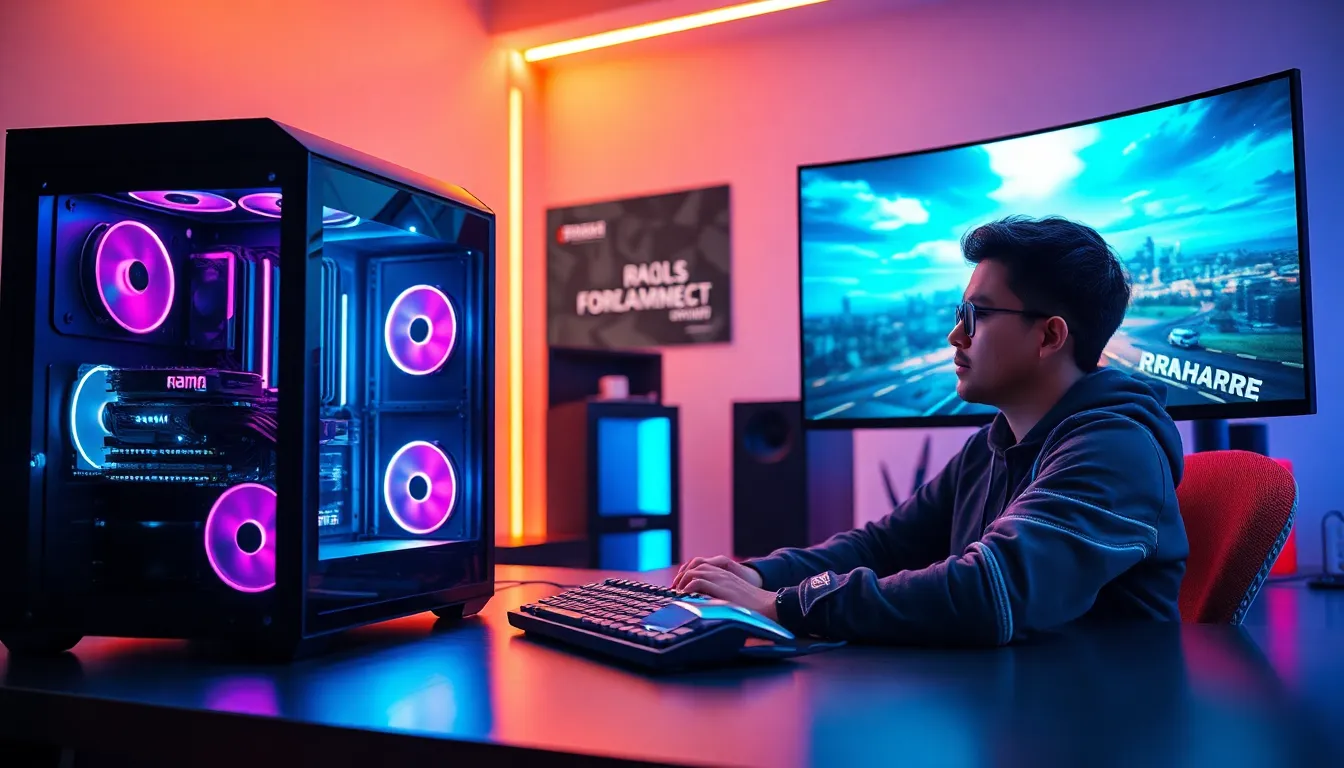When building or upgrading a gaming PC, one of the most common questions that arises is, “How much RAM do I really need?” RAM, or Random Access Memory, is crucial for multitasking and overall system performance. In this text, we will explore the different types of RAM available, recommended sizes for various gaming needs, and how RAM impacts gaming performance. By the end, readers will have a clearer understanding of the role RAM plays in their gaming setup and how to choose the right amount for their specific needs.
how much ram should a gaming pc have

Different Types of RAM Available
There are various types of RAM, with the most common being DDR4. This type of RAM is widely used in contemporary gaming PCs due to its speed and efficiency.-
- DDR4: Typically offers speeds ranging from 2133 MHz to 3600 MHz and is found in most modern gaming systems.
-
- DDR3: An older standard that is slower and less efficient compared to DDR4. It’s not recommended for new builds.
-
- DDR5: The latest standard, providing even greater speeds. While it’s still emerging in the market, it’s ideal for high-end systems built for future-proofing.
Recommended RAM Sizes for Various Gaming Needs
For most gaming needs, here are the recommended RAM sizes:-
- 8 GB: Ideal for casual gamers or those playing less demanding titles. It allows for basic multitasking but may struggle with more intense gaming experiences.
-
- 16 GB: This is the sweet spot for most gamers today. It provides enough memory for most modern games, allowing for smooth gameplay and multitasking, such as streaming or running background applications.
-
- 32 GB: Recommended for serious gamers and those who run multiple applications simultaneously. Ideal for content creators or professionals who also game.
-
- 64 GB or more: Generally overkill unless used for specific applications like 3D rendering or heavy video editing, but some high-end gaming setups may benefit if future-proofing.
Factors Influencing RAM Requirements
The amount of RAM needed can vary greatly depending on several factors:RAM for Different Gaming Genres
-
- Action and Adventure Games: Titles like “The Witcher 3” or “Cyberpunk 2077” are graphically intensive and benefit from 16 GB of RAM for optimal performance.
-
- First-Person Shooters: Games like “Call of Duty” or “Counter-Strike” usually require 16 GB for smooth gameplay during intense action.
-
- MMORPGs: Massive multiplayer games often need more RAM due to their expansive worlds. 16 GB is recommended to ensure smooth loading and functionality.
Impact of RAM on Game Performance
RAM plays a significant role in how well games perform. Insufficient RAM can lead to stuttering, longer loading times, and interruptions in gameplay. More RAM allows the system to load game textures and assets more efficiently. For instance, games with detailed graphics require more RAM to store these assets temporarily. In general, 16 GB is found to minimize slowdowns and maximize frame rates during gaming sessions.Upgrading Your RAM: When and How
Upgrading RAM is often a straightforward process that can significantly enhance a gaming PC’s performance. Here are some signs and steps for upgrading:-
- Signs of Need for Upgrade: Unresponsive applications, frequent low memory warnings, or slow gameplay performance can indicate that a RAM upgrade is necessary.
-
- Steps to Upgrade: 1. Check the motherboard specifications to determine compatible RAM. 2. Purchase the desired RAM sticks based on recommendations. 3. Power down the PC, open the case, and install the RAM in the designated slots. 4. Restart the PC and confirm the upgraded RAM is recognized in the system settings.


More Stories
Sennheiser Headphones for Gaming
Gaming Chair Blue: The Ultimate Choice for Gamers
OLED Gaming Monitor 4K